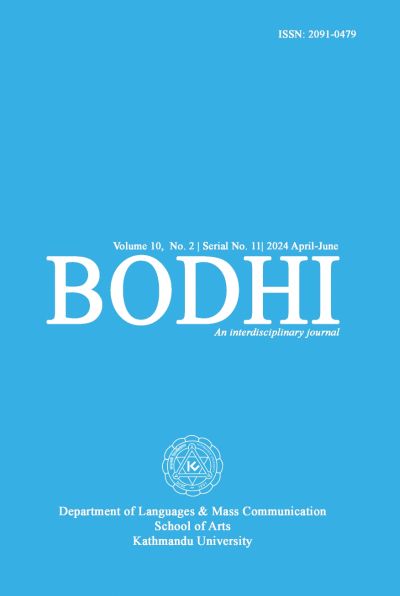Shaping User Experience in Virtual Reality: A study with special reference to Natyashastra
DOI:
https://doi.org/10.3126/bodhi.v10i2.69684Keywords:
Bharata Muni, Museums, Natyashastra, Rasa theory, User experience, Virtual Reality (VR)Abstract
This article presents a study regarding how Natyashastra’s fundamental principles of storytelling, emotional resonance, and cultural context structure the creation and reception of Virtual Reality (VR) content. Through an attentive examination of a specific VR activity featured in the Prime Minister Museum in Delhi—a helicopter ride showcasing India’s modern infrastructure—the paper explains how Natyashastra’s influence infuses the narrative structure, emotional engagement strategies, and symbolic representations within the VR experience. By exploring the interaction between ancient cultural frameworks and cutting-edge technology, this research underlines the significance of integrating cultural heritage and traditional storytelling techniques into VR design to enhance user experience, emotional connection, and cultural resonance. Through this article, the importance of incorporating cultural frameworks like Natyashastra into VR design to improve user engagement and enrich the virtual experience has been highlighted.
Downloads
Downloads
Published
How to Cite
Issue
Section
License
© Department of Languages and Mass Communication, School of Arts, Kathmandu University, Nepal




